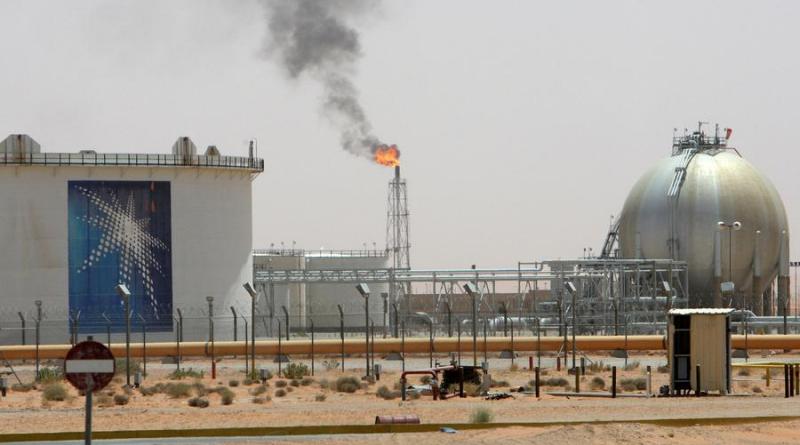Perfect moment for oil states to commit to renewables.

Gulf states have apparently been addressing the great issue of our time – the existential threat posed by the continued use of the fossil fuels upon which their vibrant economies have been built. Take Saudi Arabia, home to one fifth of the world’s oil reserves. In 2017, the kingdom launched a range of ambitious initiatives, from developing public transport to transitioning from fossil fuels to renewable energy.
Its neighbor, the United Arab Emirates, which since 2009 has hosted the intergovernmental International Renewable Energy Agency (IRENA), was an early adopter of environmental awareness, and in 2006 set up Masdar, the Abu Dhabi Future Energy Company, to support “the diversification of both its economy and energy sources for the benefit of future generations.”
Around the Persian Gulf region, there has been a steady stream of reassuring pronouncements and headlines about ambitious initiatives, from electric cars and solar farms to plans to reduce paper, plastic and water use, by nations keen to establish their credentials as environmentally responsible members of the global community.
Poorest record
So why, then, does the region still have the poorest record when it comes to generating energy from renewables?
Just how bad that record is was laid bare by BP’s latest Statistical Review of World Energy, which has been keeping tabs on global energy trends since 1965. The Middle East is at the very bottom of a table showing what percentage of energy was generated by renewables in 2018. At the top is the Asia-Pacific region, with 40.2%, followed by Europe (30.7%), North America (21.2%), South and Central America (6.3%) and Africa (1.3%).
In 2018, the Middle East managed to generate a paltry 0.3% of its energy from renewables. To be fair, part of the reason is the wide disparity in income, development status and even peace in the region. Egypt, the most populous nation in the area, has a per capita GDP of just US$2,500; it has plenty of economic issues competing for immediate attention. Syria and Yemen are war zones. Iraq is still attempting to recover from the after-effects of the 2003 war. Lebanon is, almost perennially it seems, entangled in seemingly intractable domestic problems. And on it goes.
The question, however, is why the more prosperous nations haven’t been able to take up the slack. The UAE’s “primary energy” needs – all commercially traded fuels, including those used to generate electricity – amounted to the equivalent of 112 million metric tons of oil. Of this, natural gas accounted for 65 million tons, oil for 45 – and renewables just 0.2. The picture was even worse in Saudi Arabia.
So why have the richer countries not been able to meet or even approach their widely stated ambitions?
One answer is time. It takes a lot of planning to build out sustainable capacity – though once in motion, the trajectory is steep. In the whole of Europe in 1998, solar power generated just 105 megawatts – about one-sixth of the output of a single coal plant; today, European solar power generates more than 128,000MW – an increase of more than 121,000% in 20 years. There is also an understandable reluctance by Gulf energy producers to turn their backs on the vast supplies of cheap oil and gas still to be tapped. And then there is the “virtuous problem” of rapid economic expansion, such as in Abu Dhabi and Dubai, that rapidly increases demand for energy.
Still, it might be argued that the current relatively high price (in historical terms) of fossil fuel, along with the low cost of funding from depressed global interest rates, offer opportunities that should not be discounted – bank the opportunity from today’s fossil-energy prices and lock in future opportunity by borrowing cheap money to fund long-term projects.
By 2018 there was 3,181MW of sustainable energy being generated throughout the entire Middle Eastern region, with the top players being Israel (1,076MW), Jordan (740) and the UAE (594). In each case, this is a fraction of the demand for electricity – and over the past decade the UAE’s thriving economy has driven up consumption of electricity by 60%.
Good intentions stalled
One of the biggest renewable-energy projects in the world is the 2.5-square-kilometer solar power plant near Madinat Zayed in Abu Dhabi, which came online in 2013 and is capable of generating 100MW of power. Unfortunately, there has been no further word on Phases 2 and 3 of the Shams project.
Good intentions and aspirations also appear to have stalled in Saudi. In 2018 Saudi Arabia announced a $200-billion plan to build the world’s largest solar array. It was, as Crown Prince Mohammad bin Salman said at the project’s launch in New York, “a huge step in human history.” But for now, progress appears gummed up.
As Bob Dudley, BP’s chief executive, wrote in June in the foreword to the company’s latest global energy review, in 2018 “global energy demand and carbon emissions from energy use grew at their fastest rate since 2010/11, moving even further away from the accelerated transition [to renewables] envisaged by the Paris climate goals.” Decarbonizing the power sector, he added, “is perhaps the single most important challenge … over the next 20 years [and] renewable energy has a vital role to play.”
If the world is to rise to that challenge, what it needs now is inspirational leadership – and few nations are better placed, geographically and financially to lead the way than the oil-rich states of the Gulf. The infrastructure, forward-thinking and ambition appear to be in place. The financial landscape also appears opportune to their needs. What is required now is the determination to take that final “huge step in human history” and commit wholeheartedly to a revolution in energy production that is surely the planet’s only hope for the future.
This article was provided by Syndication Bureau, which holds copyright.
26 October 2019
ASIA TIMES


